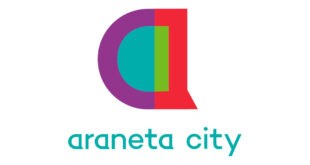BY NOW, everyone is aware that internet speeds vary per country for various reasons. Arguably, netizens in the Philippines have a love-hate relationship with their ISPs. While this may be so, one thing is true across nations around the world: people love to be entertained.
With the Philippines tracking a regular speed of 5.5 Mbps on wired and 12.33 Mbps on mobile, Globe Telecom’s data traffic from major video streaming services including YouTube and Netflix accounted for 27% of total data traffic in mobile and broadband LTE at the end of September this year.
The significant contribution of video-streaming services in mobile and broadband LTE traffic reflects the company’s aggressive deployment of infrastructure and technologies to increase network capacities and address customers’ growing bandwidth requirement amid increasing popularity of on-demand video content.
Joel Agustin, Globe Senior Vice President for Program Governance, Network Technical Group, emphasized that Globe is able to sufficiently provide a good quality of video experience for its customers despite current challenges in establishing telecommunication infrastructure that include cell sites. “The continuing deployment of LTE sites and fiber-optic cables for wider coverage and enhanced capacities is in anticipation that customer demand for bandwidth-intensive video materials such as those provided by Netflix and other video-streaming services will steadily increase moving forward,” Agustin said.

A YouTube video with a resolution of 1080 pixels could be streamed with an internet speed ranging between 3 Mbps and 6 Mbps (https://support.google.com/youtube/answer/2853702?hl=en-GB). Also, Standard Definition (SD) video content requires less bandwidth especially in small screen devices like mobile phones.
Agustin emphasized, however, that increasing customer requirement for on-demand multi-media content necessitates a continuing build of the company’s network infrastructure such as cell sites and deployment of fiber-optic cables. For many years now, Globe has had to deal with permitting difficulties in establishing right-of-way and cell sites in many villages and subdivisions as many homeowners associations are too slow in addressing the company’s right-of-way applications, effectively tying the telecommunication provider’s hand in addressing customer demand for high-speed internet service.
To date, Globe has so far deployed more than 5,000 LTE sites nationwide, using the spectrum assets it acquired last year including frequencies on 700 MHz, 1800 MHz and 2600 MHz for wider coverage and increased capacities. Majority of the company’s LTE sites were deployed in Metro Manila and other high-density areas, where many of the country’s smartphone users are located. Mobile data traffic in January to September this year surged 73% to 430 petabytes from 249 PB a year earlier as smartphone penetration increased to 70% at the end of third quarter.
 HATAW! D'yaryo ng Bayan hatawtabloid.com
HATAW! D'yaryo ng Bayan hatawtabloid.com




















